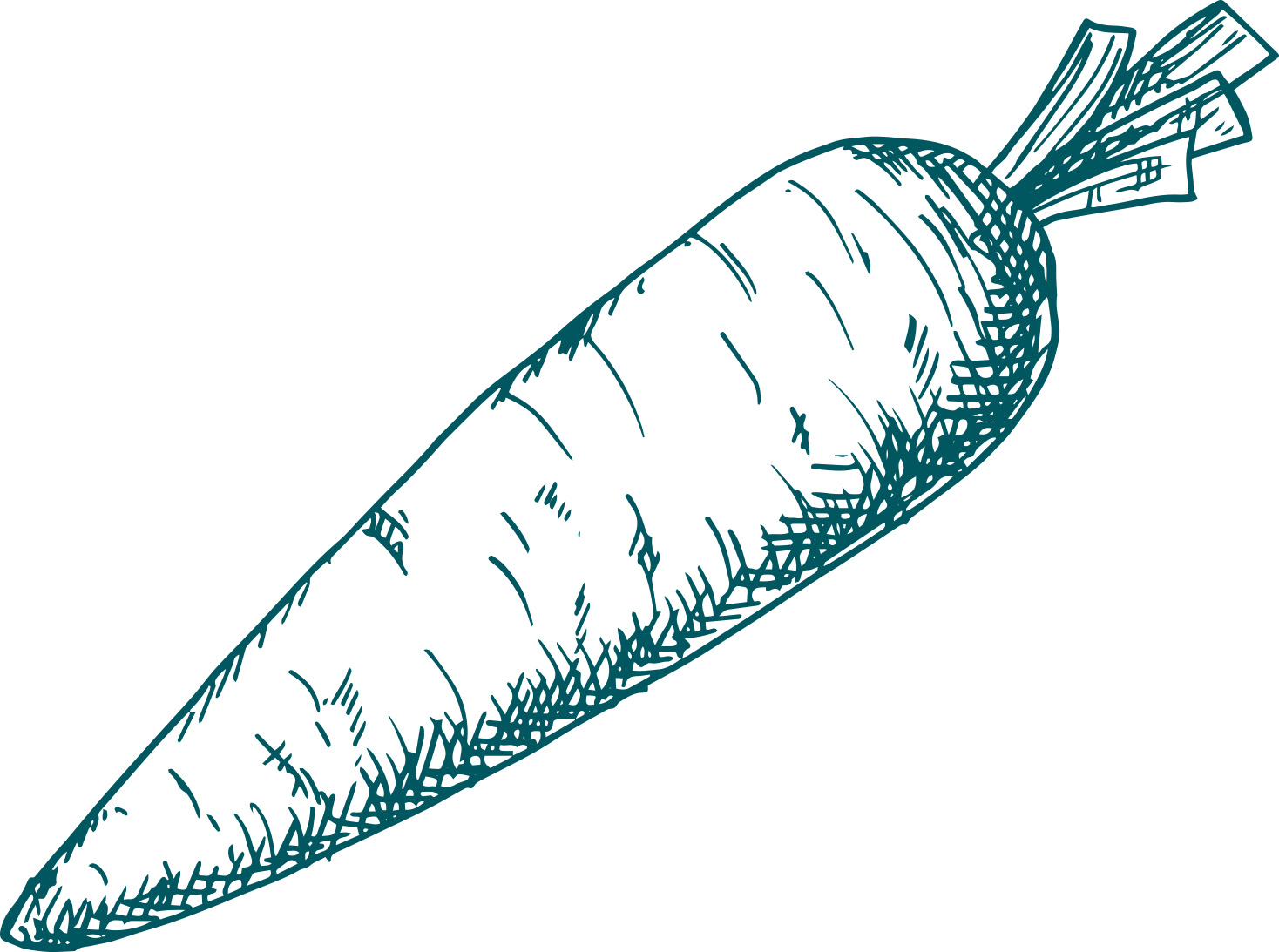Organic parsley roots
Parsley root is a slender root vegetable that resembles a white carrot, with a light flavor of parsley and celery. The distinctive flavor make parsley roots suitable for many different dishes.
Parsley roots have a long season from around September to April. Therefore they can be used in a wide variety of fall, winter and spring dishes.
Before winter arrives, the fields are covered with a thick layer of straw to insulate and protect the soil from freezing and ruining the parsley roots. When parsley roots remain in the soil throughout the season, they retain their freshness. DanRoots has a special setup, being able to harvest in all kinds of weather, and despite snow and frost, fresh produce can be delivered.
Parsley roots are rich in dietary fiber, vitamins and minerals. They are rich in vitamin C, folate and iron, which contribute to the normal function of the immune system.
Parsley roots can easily be confused with parsnips – but if you’re unsure how to tell the difference, here’s an easy rule. The parsnip is usually larger than the parsley root, and it is cone-shaped with a thick root head, much similar to a carrot. Parsley roots are typically slimmer and longer with a pointy end and more stems growing from the top.


Seasonal
SEPTEMBER-APRIL

Storage
In the fridge’s crisper drawer.
How to cook
Parsley roots have a slight taste of parsley and celery, that makes them suitable for many dishes. They are great in stews and soups, adding both flavor and texture. Parsley roots can also be cut into cubes and fried in a pan or baked in the oven until tender. Among other root vegetables, they can be used in for example mashed potatoes or as a base for rösti. Parsley roots can also be coarsely grated or cut into paper-thin slices and used as a delicious element in salads.
If tossing thin slices of parsley roots with a little lemon juice, the bright color is retained.
We always recommend that root vegetables are washed well before cooking to avoid soil bacteria in the kitchen.
